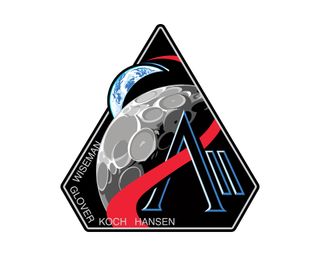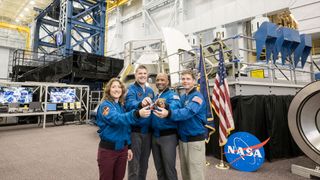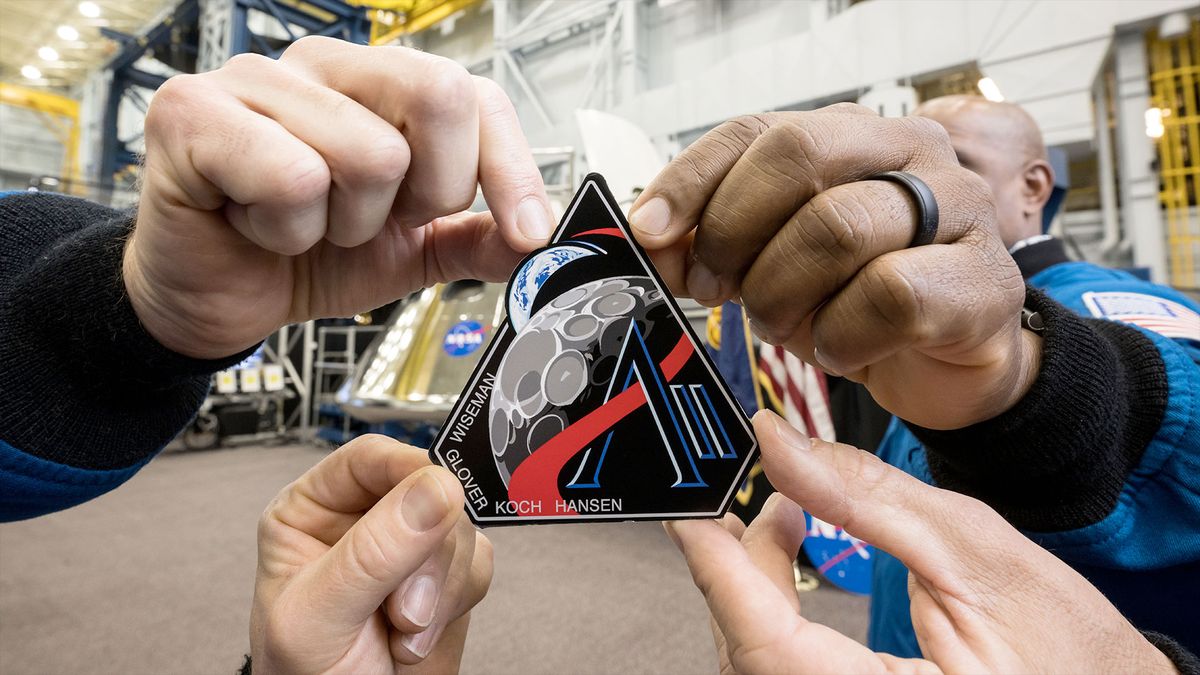The next astronauts to fly to the moon now have a mission patch to represent their history-making journey.
NASA on Thursday (April 3) debuted the official Artemis 2 insignia, its first emblem for a moon-bound crew in more than 50 years. Astronauts Reid Wiseman, Victor Glover, Christina Koch and Jeremy Hansen will wear the patch when they launch on the Artemis 2 mission, currently targeted for no later than April 2026.
"This patch designates the mission as 'AII,' signifying not only the second major flight of the Artemis campaign, but also an endeavor of discovery that seeks to explore for all and by all," wrote the crew in their description of the mission patch.
NASA Artemis II crew mission patch - YouTube

The emblem includes design elements that symbolize the past, present and future of human space exploration.
Related: NASA's Artemis 2 mission: Everything you need to know
Borrowing the same outline as NASA's Artemis program patch (as well as the shape of the "A" in "AII" and the red trajectory line forming the crossbar of the "A" and the path between Earth and the moon), the border frames an artistic depiction of "Earthrise." The now-iconic image of our home planet hovering above the lunar horizon was captured by the Apollo 8 crew, the first humans to fly to the moon.
The Artemis 2 crew will not enter lunar orbit like Frank Borman, Jim Lovell and Bill Anders did in December 1968, but will share in seeing some of the same sights as they did while flying beyond the moon and then looping back to return to Earth.
"The scene of the Earth and the moon represents the dual nature of human spaceflight, both equally compelling," wrote the Artemis 2 astronauts. "The moon represents our exploration destination, focused on discovery of the unknown. The Earth represents home, focused on the perspective we gain when we look back at our shared planet and learn what it is to be uniquely human."

The orbit depicted around Earth on the patch is intended to highlight the ongoing exploration missions that have enabled the Artemis program to set its sights on a long-term presence on the moon "and soon, Mars."
The crew's surnames in the lower left corner of the patch complete the design.
The Artemis 2 insignia is absent any country flags, though red, white and blue are the prevalent colors on the otherwise black and gray patch. Mission commander Wiseman, pilot Glover and mission specialist Koch are American astronauts, while mission specialist Hansen is from Canada. He will be the first person from a nation other than the U.S. to fly to the moon.
Hansen, together with the Canadian Space Agency, earlier revealed his personal patch for the mission. It features Indigenous art as a sign of respect for Canada's original explorers.

In addition to being humanity's first mission to the moon since 1972, the Artemis 2 mission will mark the first test flight of the SLS (Space Launch System) rocket and Orion spacecraft with astronauts on board.
Wiseman, Glover, Koch and Hansen will log more than 600,000 miles (965,000 kilometers) as they fly around the moon and back, including possibly traveling farther into space than any astronauts have flown before.
Follow collectSPACE.com on Facebook and on X at @collectSPACE. Copyright 2025 collectSPACE.com. All rights reserved.

.jpg) 17 hours ago
2
17 hours ago
2

 English (US)
English (US)